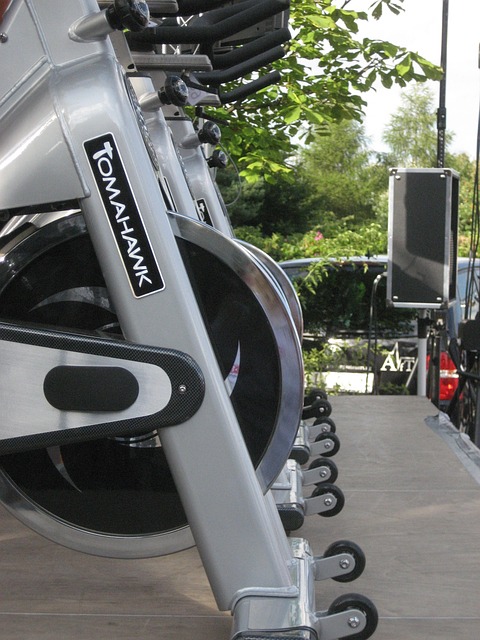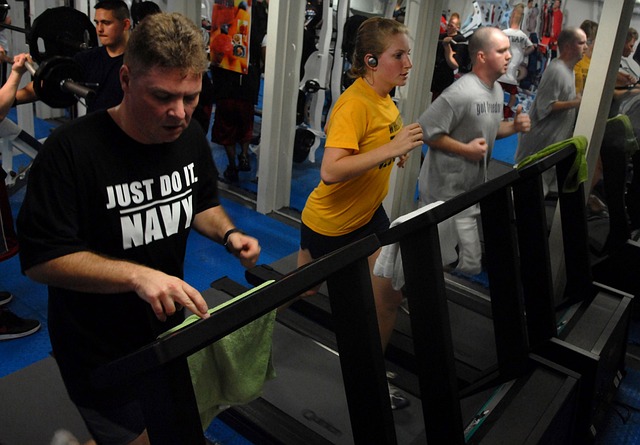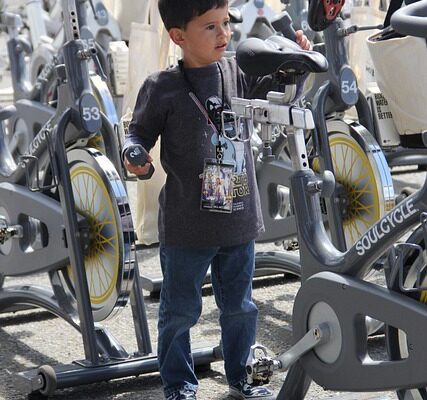Indoor cycling lessons are nearly a given in large fitness centers, and specialized cycling studios are usually only a short distance away in major cities.
However, while indoor cycling is common in modern fitness circles—there are even reality TV series that follow the exploits of cycling studio trainers and owners—the first indoor cycling class, Spinning, wasn’t launched until 1993.
But what about after its inception? Oh, how the show has evolved and altered. With beat-based choreography, killer playlists, and celebrity-like trainers whose clientele follows them from studio to studio, what was once seen only as an indoor training tool for serious riders now has universal appeal.
The result is a type of fitness that has considerable staying power—not just because it can adapt with each new generation of fitness fanatics but also because it provides health-boosting benefits that keep participants coming back for more.
What Exactly Is Indoor Cycling?
Indoor cycling is a type of cardiovascular exercise that, like road riding, is often given in a group environment. Indoor cycling uses a specific type of stationary bike known as a “spin bike,” albeit the terms “spinning” and “spin bikes” are trademarked brand names.

Indoor cycling is most commonly given in a group fitness setting; however, many gyms do have spin bikes available for solitary rides.
However, because this kind of indoor cycling differs from others, it’s a good idea to take a few lessons before doing the sport on your own. Cycling instructors can show you how to properly set up your bike and get the most out of every ride.
The Top 10 Facts About Indoor Cycling
Indoor riding, particularly instructor-led group cycling programs, is an excellent approach to developing cardiovascular fitness and lower body strength. However, as with any kind of exercise, it is not suitable for everyone. This is one of the reasons why taking a few classes before attempting to ride on your own is a good idea.
Indoor Bikes Are Not the Same as Traditional Stationary Bikes
Indoor cycling bikes are designed and feel differently than typical stationary bikes, and these variances can affect your training experience.
Spin Bike
For starters, spin bikes are intended to simulate the whole sensation of cycling outside.
As a result, the seat is narrower than on a standard stationary bike, and the handlebars and seat may be adjusted vertically and horizontally to better match your body shape and riding posture. These fundamental elements also allow you to sit or stand while riding, exactly like on a road bike.
The variations in how the bikes are powered, though, are the most significant. Traditional stationary cycles have motors and electronic settings with pre-programmed programs and resistance levels that can be adjusted while riding. While convenient, the effect is a “clunkier” ride that takes away part of your control as a rider.
On the other hand, spin bikes have a large flywheel at the front of the bike that is directly connected to the pedal. This mechanism is comparable to a typical bike in that the pedal power is actually in the rider’s hands. The pace of each pedal stroke is controlled by the rider, as is the resistance of the flywheel, which is manually regulated via a knob or lever.
As a result, you have entire control over your ride. You can go from no resistance at all—where the flywheel rotates smoothly as if riding down a hill—to too much resistance, which makes it nearly hard to turn the pedals as if climbing a steep mountain.
Classes Are Exhausting
If you dislike high-intensity workouts, group cycling sessions might not be for you. These programs are specifically designed to take you on a “hilly” ride, with instructors calling for regular changes in resistance and intensity, leading you up and down a succession of virtual slopes, frequently to the sound of blaring, heart-pumping tunes.

The experience is a mix of hardship and thrill, leaving you with aching legs and a sweaty body. And all that perspiration? It’s frequently compounded by a huge number of bikes crammed into a small space, then laden with bodies generating expired air and much more sweat, all of which contribute to a humid experience.
It’s an experience that some people adore and others despise.
If you enjoy it, there’s good news: the rigorous nature of the workout may allow you to burn between 400 – 600 calories per class. Some studios claim you can burn more calories, but those figures should be taken with a grain of salt.
The actual quantity of calories you’ll burn depends on your height, weight, gender, muscle mass, and age, as well as how hard you push yourself throughout an exercise. To acquire a more accurate estimate of your height and weight, use an online calorie burn calculator.
Studio classes can be costly.
There is good news if the notion of spending $60 to $100 each week on your indoor riding habit makes you shudder. Most cycling studios provide some sort of “first-class free” benefit so you can try out a teacher or facility before spending a lot of money. And if you fall in love with this form of cardio, you may save money on studio courses.
The form is essential for indoor cycling performance.
There is, believe it or not, a correct and wrong way to ride a bike, and this is especially true while riding at high speeds. Poor posture, for example, can cause knee pain; leaning too heavily on your bike can reduce calorie burn by reducing muscle engagement; and failing to breathe properly can limit the flow of oxygenated blood to working muscles, resulting in performance deficits, dizziness, and other unpleasant symptoms.

It’s natural to be oblivious to some of your own mistakes, which is why it’s critical to pay attention to your instructor’s form notes. You can also review your form for problematic habits, such as allowing your hips to wobble when riding and brushing up on proper pedaling anatomy, standing posture mastery, and cadence management.
There is a Correct and Incorrect Way to Set Up Your Bike
One of the advantages of indoor cycling is you can adjust the handlebars and seat of a bike to fit your body’s frame. Because no two bodies are similar, even modest tweaks to seat height or handlebar forward/backward placements can result in a more comfortable and safe ride.
Making these adjustments correctly, on the other hand, isn’t always intuitive. This is one of the reasons why taking a few classes before attempting to ride on your own is a good idea. A group cycling teacher can assist you with adjusting your bike the first few times you ride, as well as provide pointers and tips for determining the best fit on your own.
